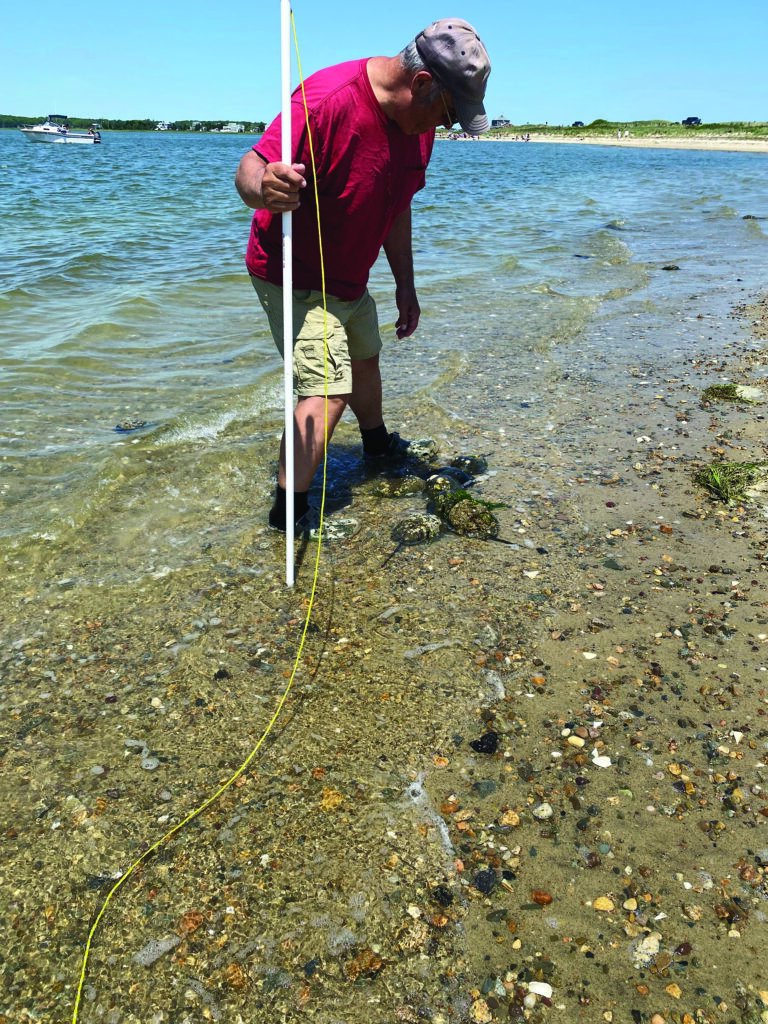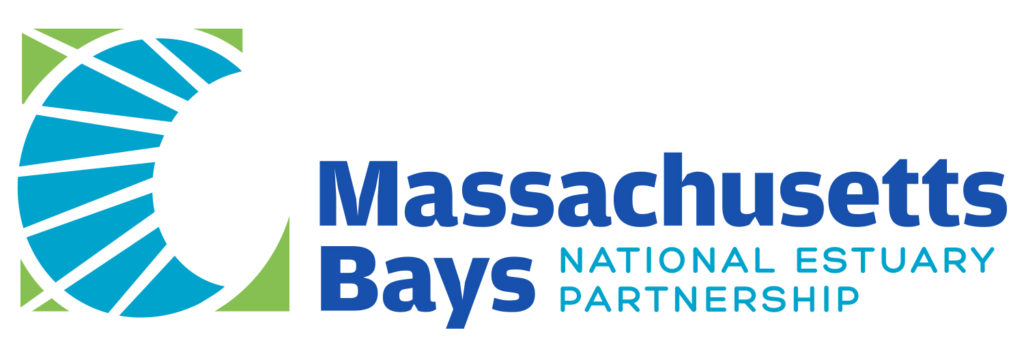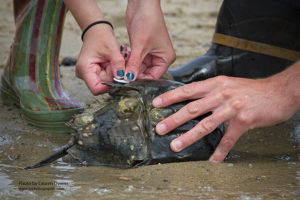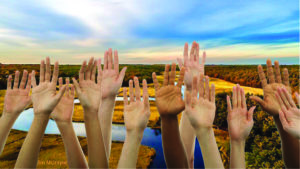 Every spring, in May and June, horseshoe crabs move shoreward to reproduce on our local beaches. To monitor their populations, volunteers on the South Shore gather data every year to determine if current regulations are helping to maintain or increase the number of crabs in the bay. We have been monitoring horseshoe crabs since 2008 in Duxbury Bay.
Every spring, in May and June, horseshoe crabs move shoreward to reproduce on our local beaches. To monitor their populations, volunteers on the South Shore gather data every year to determine if current regulations are helping to maintain or increase the number of crabs in the bay. We have been monitoring horseshoe crabs since 2008 in Duxbury Bay.
Horseshoe crabs don’t seem very special, but they actually do many important things in our beaches and bays. They mix up sediment and add oxygen back into the mudflats. Their eggs are a crucial food source for migrating shorebirds, like red knots and ruddy turnstones. And they are also very important to humans–a compound in their blood is used to test for bacterial contamination, they are used for bait in the eel, conch, and whelk fisheries, and for vision research. For these reasons and more, Sara Grady of the Massachusetts Bays Program South Shore (housed at the NSRWA) has been working with Mass. Division of Marine Fisheries to conduct annual horseshoe crab spawning surveys in Duxbury Bay.
 We monitor around the new and full moons and in 2022 the first monitoring occurred in mid-May. That is when we saw peak density, or crabs per m2, as well as peak spawning index (SI), or females per m2.
We monitor around the new and full moons and in 2022 the first monitoring occurred in mid-May. That is when we saw peak density, or crabs per m2, as well as peak spawning index (SI), or females per m2.
Duxbury Bay spawning index – for the last 6 years we have seen a greater SI during the day. 2022 was above the timeseries median for both day and night surveys. (Graph via MassDMF)

If you’d like to join our crew, here’s what you need to know:
- Monitoring take place in May and June around the time of the full and new moons.
- Teams of two-to-three people walk and wade along an 800-meter stretch of the Duxbury Bay shoreline north of the Powder Point Bridge.
- Teams use poles and rope to define a 5m x 5m square. Crabs inside the square are counted and sexed, and different clusters in which they are arranged are noted.
- This process is repeated in approximately 40 squares along the shore.
- There are three daytime surveys (usually late morning, midday, and early afternoon) and three nighttime surveys (usually late evening, midnight, and early morning).
Please note: to volunteer you must be able to walk on sand for about a mile, and be okay with getting your wet feet (one team member is usually in the water up to the waist).
Download the 2022 Annual Citizen Science Monitoring Report here.
(Photo by Lauren Owens-Lambert)




